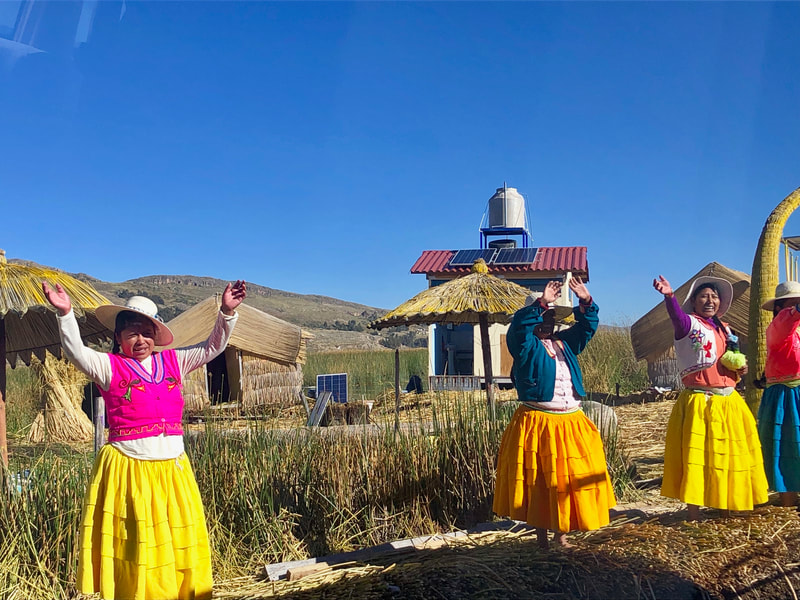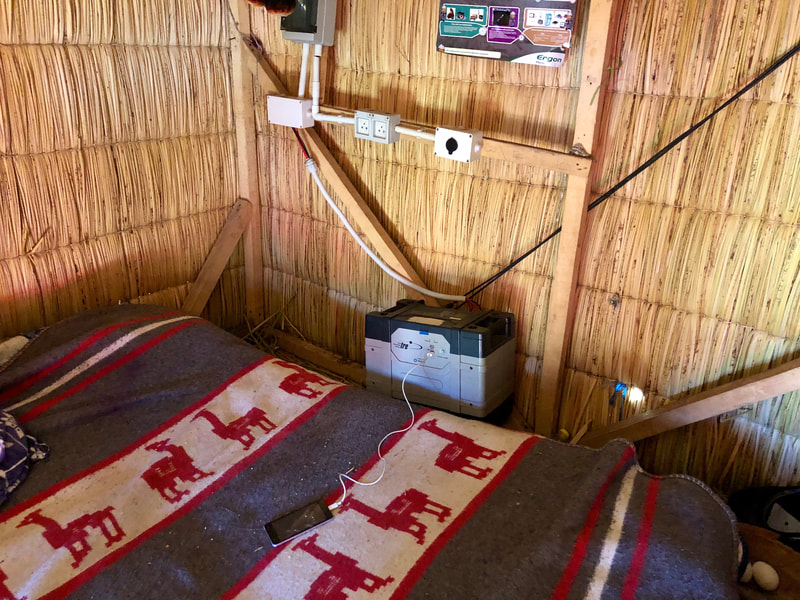|
When I was young, I had a Carmen Sandiego book where she she went to Machu Picchu, and it always stood out in my mind as a place that I had to see for myself. Something about building a city on top of a mountain seemed impossibly appealing. I finally did get to visit Peru and Machu Picchu with my family and a close friend last month. What I liked most about Peru was learning about the ancient cultures that lived there before Europeans arrived. I am intrigued by some of the general beliefs of Native American peoples, especially in terms of their connection and respect for the environment, and the plants and animals around them. For the ancient people of the Andes, the goddess “Pachamama” is the origin of the four elements and basically embodies “Mother Earth.” She is responsible both for bringing harvest, and natural disasters, like earthquakes. Taking too much from Pachamama, without giving back, is believed to cause these disasters. While I don’t connect as much with the sacrificial practice of “giving back” to earth, I do think we can live in harmony with it, and that is reflected in the ways the Incas and pre-Inca tribes lived in South America. The gateway town to Machu Picchu, Aguas Calientes, is only accessible by train and has no cars. I love car-free towns. I always thought that car-free towns were quiet because of the lack of traffic noise, but this town was loud, day and night, with the streets truly reserved for the people, like a community park that grows through the town. There was also a hydro plant on the Machu Picchu river that we got some great views of and it made me happy that the mountain air wasn’t spoiled by pollution. We used the tour company Tierras Vivas, which is committed to responsible travel and also hires and trains women to lead tours. Seeing Machu Picchu revealed to us after a long hike in high altitude was literally breathtaking. After following the Inca trail, I could see why they picked this seemingly remote and hard to get to mountain to build their city and temples. It was surrounded by sharp mountains enveloped by soft clouds on all sides. A city protected by the elements that conquerors could never find, and wouldn’t until 1911 While Machu Picchu was the amazing place that I expected to be, there were many other endearing and unexpected experiences that we came across on our trip in Peru. From hunting signs of extraterrestrial influences featured on Ancient Aliens to the countless and varied versions of vegetable quinoa soup that I had nearly every day. The experience that stood out to me most, however, were the floating islands of Uros. Lake Titicaca is the highest navigable lake in the world and one of the largest in South America, sitting in the highlands between Peru and Bolivia at 12,500 feet (3,800 meters) above sea level. Puno is a city on the bay of the lake that faces east. I got up early one morning to climb up to a viewpoint above our hotel to catch the sunrise coming up through the narrow inlet of the bay formed by the two peninsulas. Again, an impeccable placement of a settlement by the ancient tribes to pay tribute to the rising sun. Off the coast of Puno in the bay is a marsh made up of very tall grasses, akin to the Everglades that I’m so familiar with in Florida. On the second to last day of our trip, I booked a boat tour that would take us to visit the floating islands of Uros within theses marshes. I didn’t really realize what “floating islands” meant until we got there, and we were all impressed. The Uros are a community of about 2000 indigenous people living on over 100 islands that are composed of the straw-like marsh grasses and mud. They live on the cold water year-round, constantly re-building their islands and homes from the degradation of the elements. It is really an amazing site to see, a community that looks primitive but is actually very innovative, figuring out how to live in concert with the lake and marsh in quite harsh conditions. The Uros use the environment around them for everything. The long grass-like plants in the marsh are their islands, their houses, and their food. They have an extremely close and unique community, because they rely on each other to survive. The kids go to school (by boat) and there is even a floating island dedicated to a medical center. It’s easy to question, how people can live like this, and why? Everything is wet and cold and they have to work on rebuilding their islands everyday. The Peruvian government had even offered to move them back to shore in the 1990s but they refused. The Uros want to live as their ancestors had. Instead, the government built better sanitation huts and provided solar panel/battery systems. One woman, Margarita, offered for me to visit inside her house and she boasted at having the solar/battery to charge her phone. The Uros people would probably also think our lives are strange. That we spend our days inside, in front of computers or commuting in our cars and packed metro trains. We deal with endless administration and bureaucracy. While, they probably don’t have paperwork, because paper gets wet! We only spend two (three if we’re lucky) weeks per year on vacation, visiting their mountains and their islands, a place that they get to experience every day.
My father is not a religious man, or so he claims, but he is spiritual in a way and always remarks when we’re at high altitude, in the mountains, that this where we are closest to god. Not in an enclosed church, but facing an expansive lake where you can see the snow-capped mountains touching the sky and feel Pachamama in between the scarce particles of air blowing around you.
3 Comments
Saul de Tarsus
11/20/2019 04:09:05 am
Under the 1st Amendment to the Constitution we are all entitled to freedom of speech (including me, and I write as a private citizen only, unaffiliated with any organization). As I say below, after this post, I shall not bother you again. But you abuse that freedom by lending support and advocacy to the deification of the demon goddess Pachamama. Your ideology is no different than the heretical ideology of Jorge Bergoglio, the Argentinian Marxist Peronist currently occupying the See of St. Peter (until the Holy Spirit deposes and anathematizes him and all his works). And don't you start quoting about Papal infallibility because Vatican Council I in the late 1800s said that the Holy Spirit was promised to St. Peter's successor to preserve the continuity of the Faith, NOT to invent some new doctrine, and St. Robert Bellermine said it is licit, even necessary, to oppose a heretical Pope. Lord save us from the smoke of Satan out of the heterodox Vatican Council II in the 1960s!
Reply
Chris Colbert
11/26/2019 04:49:20 pm
Wow. This comment must be from the pre-conversion Saul.
Reply
Leave a Reply. |
Lenka KollarEcomodernist and nuclear engineer inspired by nature. Archives
May 2020
|












 RSS Feed
RSS Feed
